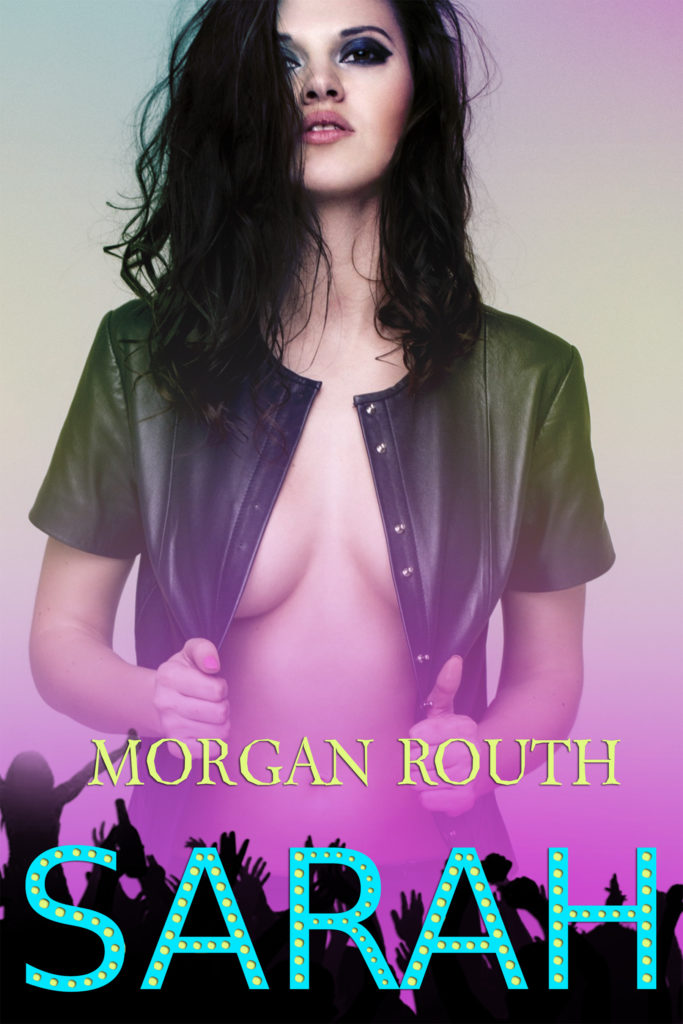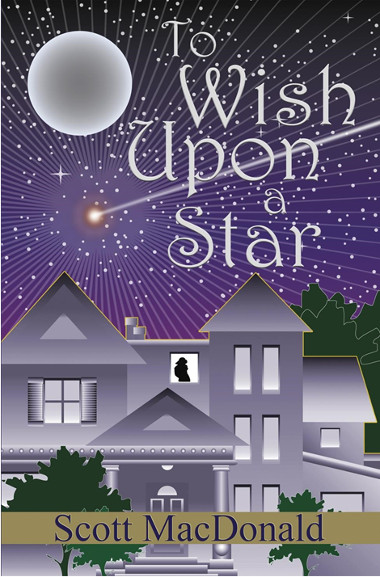Weekdays I wake myself up early and get some exercise and sun, and then I have this really great clarity in my head for writing. Everything is brighter when I take care of my body and my mental health, things make sense – logic, style, scene atmosphere.
Morgan Routh – 29 June 2018
The Back Flap
In a beautiful city, a sweet girl named Sarah works part-time at the zoo. Everything was exactly the way she likes it, simple, unadorned. She lived in steady happiness. That is until Toni, a gorgeous woman, crashes into her life. Suddenly Sarah is swept into a fashionable and chaotic world, tormented by the call of her old ways and the temptation of the passionate new.
The depth of these new, primal feelings yank her around. Pain and ecstasy she’s never felt before. Should she turn her back on the safety and emotional security of what she knows? Charge recklessly into the arms of this high stakes love? Sarah is alone in her choices, and it is her life that has become the menagerie.
About the book
What is the book about?
Sarah is such a sweet girl, someone who yearns for real companionship. When she finds someone – Toni – she fights with everything she has to make their love happen. And it’s difficult. Crushing anxiety, introversion, fear of the unknown. Sarah must rise, she must gain control of herself to be a worthy lover.
She also has this colorful life around her. Her deep passion at the zoo, loveable friends and co-workers, a suffocatingly loving and conservative mother. This book is complex and beautiful, and when you read it you will live in that passion that envelops Sarah.
When did you start writing the book?
I started in 2015. I spend my mornings climbing this pretty mountain by my house, and I tell my dad stories to pass the time. Sarah started there, and I couldn’t let her go.
How long did it take you to write it?
Three and a half years. She’s been on my mind every day. I’m so excited that she’s out there now. One of my neighbors flagged me down on a dog walk and started asking about the chess game in chapter three, it was so weird to have someone casually talk about Sarah the way I think about her. She’s come alive!
Where did you get the idea from?
She’s as real to me as anyone else. My fictional tale started with “There’s this girl, and she’s a friend of mine. She loves her job at the zoo, but she’s got these love problems — stuff that she can’t admit to anyone, not her friends, not her mom, sometimes not even to herself.”
Were there any parts of the book where you struggled?
No! It’s fantastic. My other writings have always been a struggle against silence. My first novel, Moogie Covenant, just tore me up. Sarah though, she’s such a sweetheart. The words practically wrote themselves. And the sequel (Toni’s side) is also writing itself.
What came easily?
The humor for sure. This book takes many deep, dramatic turns, but it also bounces right back up into feathery, goofy fun. Sarah has such a creative imagination, and she projects onto the animals that she cares for. Everything around her is so lively and imaginative at the zoo. I certainly had a spring in my fingertips when I wrote it.
Are your characters entirely fictitious or have you borrowed from real world people you know?
Almost all of my friends are a motley crew of introverts. I have definitely sponged up a great deal of their anxieties through the years. But I have also seen the quiet complexity that hints behind their seemingly muted personas. When I wrote Sarah I certainly had in mind that introverts hate in art and media when people depict a grown introvert equals an extrovert. The answer to introversion is not extroversion, but a better sense of control. Sarah learns to stand her ground and be the person she wants to be. She doesn’t need loud validation to experience it either.
We all know how important it is for writers to read. Are there any particular authors that have influenced how you write and, if so, how have they influenced you?
I love George Orwell. I’ve read everything he’s ever written. Letters, early books, articles, short stories. He used to be a professional book reviewer, long before he was a fulltime novelist. I like to sit down and get to know an author’s full bibliography and their natural rhetoric style.
It’s like meeting a new friend and putting together a puzzle at the same time. And I think that rounded view helps me shape the realism in my own characters. Many people have said that they know my characters like real, unique people. Even those who don’t read the genres I work in say that they can empathize well with characters like Sarah and Toni. I think the way I consume writers has a lot to do with that.
Do you have a target reader?
Anyone who likes to buckle down and seriously get into books. This series, Present Intimacy, is for everyone who likes romance and good relationship stories. It’s youthful, it’s a fresh style and has the lightness of contemporary writing, but it also had a deep richness beneath. Every word has meaning. Every detail has a payoff.
About Writing
Do you have a writing process? If so can you please describe it?
Yes. I sit down and bang on the keyboard. I have my trusty Great Dane snoozing at my feet. The key is that I keep the sugar and bad sleep for the weekends. Weekdays I wake myself up early and get some exercise and sun, and then I have this really great clarity in my head for writing. Everything is brighter when I take care of my body and my mental health, things make sense – logic, style, scene atmosphere.
Do you outline? If so, do you do so extensively or just chapter headings and a couple of sentences?
Start to finish I already have the story in my head. I do outline. I leave room for tangents that I wander off to. Sometimes I skip around, building up this pile to sift through once I get to future parts of the story. Most of the storytelling aspects come from a more subconscious part of me.
Do you edit as you go or wait until you’ve finished?
I do both. Everything must feel essential to the reader. I’m not one to self-indulgently keep an element here or there because it was shiny or I had fun writing it. I’ve read my texts many times, continually going back and sneaking in new hints for the middle and later parts of the book and sequels. People say they have trouble skimming or skipping around in my books because they are worried they’ll miss something.
Did you hire a professional editor?
In college I had a strong social and forensic linguistics background. I also dabbled in English history, rhetorical grammar, and I’ve read Chaucer in Middle English. I am acquainted with English in a deep way, and it gives me a certain vision for editing that most self-published authors don’t have. The writing is professional and artistically meaningful, and I’m very territorial when it comes to developing my work. When the books come out my editor is my audience, I hyper-listen to how they react to it, what they want. They are the ones that matter, and I make edits when they need me to.
Do you listen to music while you write? If yes, what gets the fingers tapping?
Nope. I need dead silence and pure darkness to write.
About Publishing
Did you submit your work to Agents?
No I did not. I manage everything myself so that I work directly with my readers.
What made you decide to go Indie, whether self-publishing or with an indie publisher? Was it a particular event or a gradual process?
It has never been a question. I have always wanted to work independently. I appreciate the full responsibility and autonomy of my writing abilities. It’s a difficult road. But every reader is going to get my best, and I care for my readers and the community around the art in ways that most writers and publishing houses cannot.
Did you get your book cover professionally done or did you do it yourself?
This cover is by a wonderful graphic artist named Tsvety Genova. She’s a fiery redhead in Russia. She blended a sexier side of Sarah with nightclub elements in the novel.
Do you have a marketing plan for the book or are you just winging it?
I am winging it! All advice and guidance are welcome! Funny story, on the first day I went out and circulated the book to all my friends and family, AND the entire neighborhood. I was surprised to discover just how excited many of the older neighbors were to read my romance. I got a few “Oh honey, you write that kind of romance?” I could just see little shivers going up their spines.
Any advice that you would like to give to other newbies considering becoming Indie authors?
Write what makes you happy. Write what you are passionate about, and don’t let the naysayers knock you off your track.
About You
What would you like readers to know about you?
Sarah is the first novel of a long series. Please sign up for my mailing list so that you don’t miss the next one! You’re in for a fantastic ride. All of my info is at MorganRouth.com
End of Interview:
Get your copy of Sarah from Amazon US or Amazon UK.
from The IndieView https://ift.tt/2tWdRwv
























